How Wapping Wharf pivoted from forgotten shipyard to roaring urban village
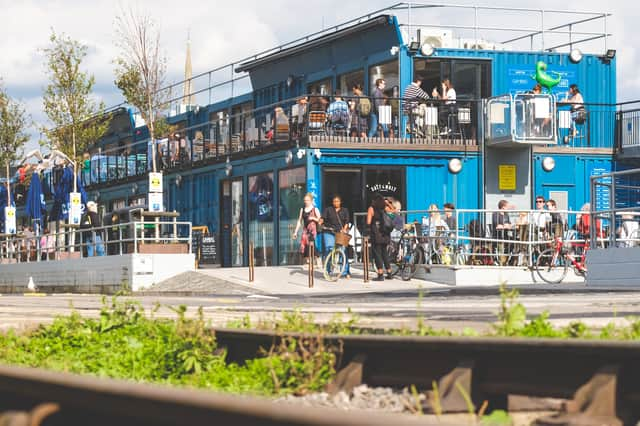

Those who frequent this trendy new hub may not be aware they’re standing atop one of the most historically significant parts of Bristol.
A shipyard flourished there from the mid-1700s before the New Gaol opened in 1820.
Advertisement
Hide AdAdvertisement
Hide AdThe doors of the gaol were famously smashed down during the Bristol riots of 1831, with released prisoners burning prison records and setting fire to the building itself.
The Fairbairn steam crane was erected in 1875 and the Prince Street hydraulic swing bridge was constructed three years later, both of which are still in working order today.
But by the time the dockyard trade plummeted in the 1960s, the site stood mostly dilapidated.
So how did a forgotten shipyard skyrocket to become one of the city’s most sought-after locations in which to live, work and play?
Advertisement
Hide AdAdvertisement
Hide AdIt began in 2003 when the site was snapped up by family-run developers Umberslade, who originally operated it as a car park.
The site’s main advantage may be its position adjoining the glistening waterside, but director Stuart Hatton’s vision for the Wapping Wharf of the future was actually sparked by an unremarkable monument towards the back - the Gaol Ferry Bridge.
“We realised that thousands of people were walking along that bridge from Bedminster and Southville into the centre of Bristol each week, along a rather unattractive route,” Stuart told us.
“So we thought, how about somewhere nice they could stop off at? Have dinner, a drink or pick up a takeaway for when they got home?
Advertisement
Hide AdAdvertisement
Hide Ad“From there it kind of evolved into us wanting to create a community where you could live, work, eat and relax and generally never have to leave if you didn’t want to.”
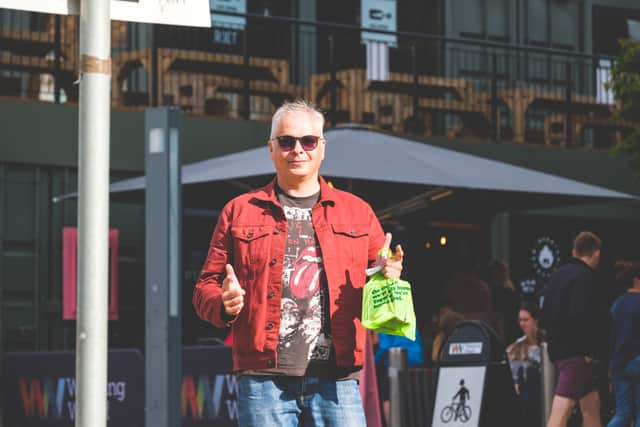

‘Phase one’ of the development has since been completed with plush apartments, independent shops and bars all springing up over the years to form a neighbourhood in itself.
Perhaps the most exciting venture across the development is Cargo, which features a number of eclectic restaurants housed snugly inside converted shipping containers.
Stuart added: “My wife and I actually came up with that idea during a holiday to New York.
Advertisement
Hide AdAdvertisement
Hide Ad“We were strolling around the docks and saw all these shipping containers and thought, what a cool idea.
“Originally it was meant to be just four shipping containers with a few tables and chairs in the middle, but it’s so much more than that now.
“What’s special about the businesses at Wapping Wharf is that they are all curated.
“We check first and foremost that they’ll be a good fit for the community.”
Advertisement
Hide AdAdvertisement
Hide AdNo chains here - each business is independent, fuelled by zealous passion and sports its own unapologetically ‘human’ backstory.
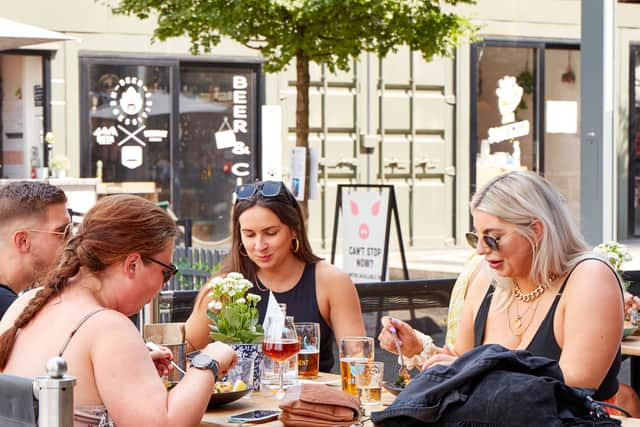

For instance Georgia Hussey, who owns Loke Poké, originally ran the business out of her kitchen for one day a week during lockdown before setting up permanent shop at Cargo.
Georgia lived in Sydney for a time where she fell in love with poké - a colourful Hawaiian dish prominent in surf culture, featuring diced raw fish.
“I was eating it every day while I was there,” she said. “Poké is heavily influenced by Japanese cuisine but, even though there are some incredible Japanese restaurants in Bristol, you don’t really get poké over here.
Advertisement
Hide AdAdvertisement
Hide Ad“This has really allowed us to make our poké bowls our own - for example, we offer vegetarian and vegan options.
“The sense of community between the businesses here is so evident. We often collaborate and share food amongst ourselves.
“The other day we traded a few poké bowls for some delicious food from Pizzarova and Jigaraki.”
Family-run sausage and bacon makersThe Jolly Hog was the result of a dispute between three brothers about the world’s best banger.
Advertisement
Hide AdAdvertisement
Hide AdTheir Pigsty unit arrived at Cargo back in 2016 after one of the siblings, Olly Kohn, was inspired by the idea of dishing up their award-running products in a restaurant setting.
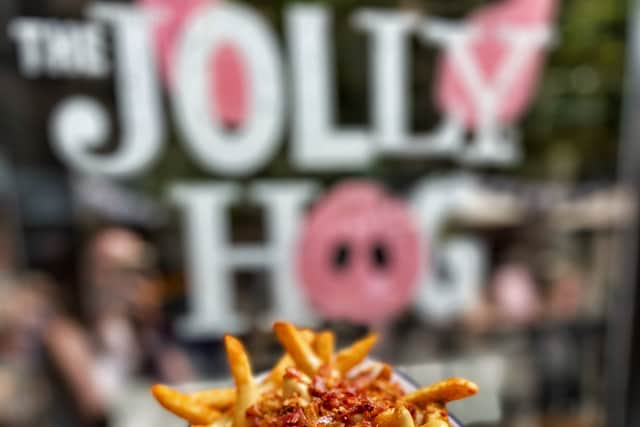

Olly said: “We love the community spirit down here so much that we’ve recently moved our Hog HQ offices down to Wapping Wharf.
“It was the perfect place for us as a business to have our first restaurant and we have loved watching our neighbouring businesses grow and change over the many years.”
It was a ‘morning constitutional’ by the harbour that prompted Kevin Ramage to open a bookshop at Wapping Wharf, Book Haus.
Advertisement
Hide AdAdvertisement
Hide Ad“I already run a few bookshops in Scotland, where me and my family previously lived before we moved to Bristol a few years ago.
“I was strolling round Wapping Wharf one day and suddenly thought - this place is great, it needs a bookshop.
“Our Bristol shop is only a couple of months old, so we’re still learning, but have already derived a mixed base of customers.
“Some drift in from the city centre, some of them live around the harbour and some of them live in the flats above us!
Advertisement
Hide AdAdvertisement
Hide Ad“Book shops are doing well at the moment. I think it’s because after lockdown, people are sick of staring at screens and have found pleasure in going back to physical, tangible things.
“People are hankering for experience. In a bookshop you can browse, pick things up and chat to someone about what they’d reccommend. You don’t get that online.”
Grace Lander, general manager at Wild Beer Company, said: “This year has obviously been a challenging one for everyone in hospitality, but having a close knit community at Wapping Wharf has been invaluable.
“We all support each other and it’s great to be able to take a break from a long shift browsing in the shops or grabbing something great to eat from another independent business.
Advertisement
Hide AdAdvertisement
Hide Ad“There’s so much variety too. We’re very blessed to work as part of such an up and coming area of Bristol.”
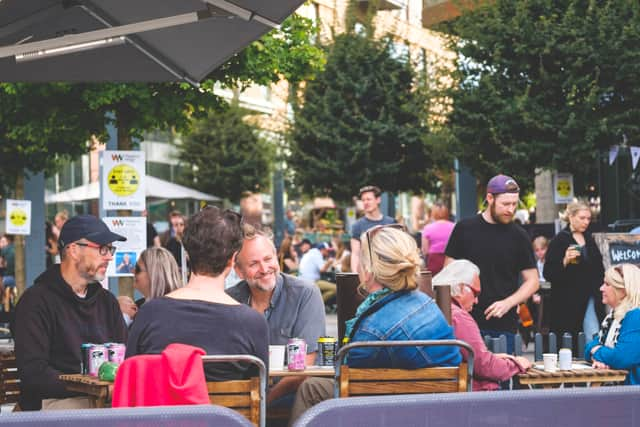

Regeneration at the development continues with Phase Two, which includes the construction of affordable homes, already underway.
Cargo Work, which will house ‘the next generation of offices’ and ‘forward-thinking, creative occupiers’, will also land as part of the project as well as further retail and leisure units.
Stuart added: “Architects can design great buildings, but it’s the people that make a community.
Advertisement
Hide AdAdvertisement
Hide Ad“Wapping Wharf is propped up by fantastic individual businesses and of course we have amazing attractions like the M Shed and the SS Brunel on the doorstep which are another big draw.
“It’s taken lot of hard work but the result is a whole greater than the sum of its parts.”
Developments on this scale, especially amidst sites of historic interest, can often be controversial - but Wapping Whard has proven so popular it’s difficult to see it as anything other than a valuable asset to Bristol and its future.
Comment Guidelines
National World encourages reader discussion on our stories. User feedback, insights and back-and-forth exchanges add a rich layer of context to reporting. Please review our Community Guidelines before commenting.